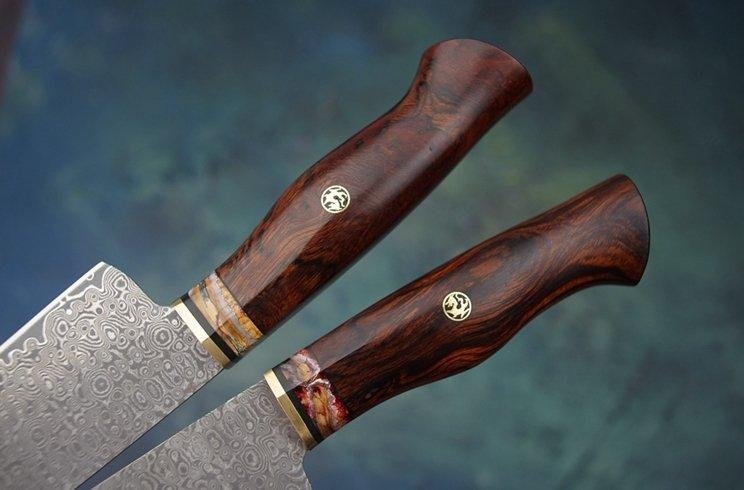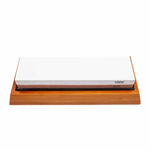Wooden knife handles: Types, Benefits and Care

Wood is one of the most common natural materials that has been used as a knife handle for centuries. It is no surprise that knife collectors are mostly drawn towards knives with wooden handles. They know the value of a beautiful handle paired with a heavy-duty steel blade.
Benefits of wooden handles
Beauty: Wood gives a lot of character and beauty to kitchen knives making them worth more than if they were made of the same steel as the blade. Wood is also very easy to carve beautiful designs and symbols, which make the handle even more attractive. It is a classic choice worth being in or kitchen.
Comfort: Wood is very easy to work with especially if you cook a lot. It is very comfortable for the handgrip and prevents the knife from slipping out of your hand while you cut away your veggies. Wooden handles are mostly ergonomic ad fit the hand perfectly neat allowing yo a precise cutting experience.
Inexpensive: Compared to other materials wooden-handled knives are generally more inexpensive, which is always a plus. But this doesn’t mean that they have low quality, it all depends on the price of wood ad it is lower than the price of steel.
Durability: And lastly, if you take good care of it, a wooden handle can last you a lifetime. Let’s face it, any kitchen tool is going to need maintenance, but not all can guarantee longevity even after good care. Wood is one of those materials that will need just 5 minutes every once in a while to freshen up and continue serving you. Now, if you don’t know how to do that, follow our guide down below.
How to take care of wooden handles?
Well, it is a fairly easy task which requires a little bit of time off your day maybe once or twice a month. The biggest issue with wooden handles is that they can dry out no matter how often you use them. But any dry wood can be brought back to life with a little oil applied every once in a while. The oil will not only prevent cracks in the handle but also make it look more fresh and beautiful than it was the day you got the knife.
But you must remember that there are some types of wood that might not absorb oil. These are wooden handles already enhanced with polish or paint. In addition, stabilized types of wood, wood that has absorbed stabilization resin, won’t need as much oil as the non-stabilized types of wood.
How to apply oil to your wooden handle?
You need to apply it preferably with a clean cloth. Not much is needed, just a couple of drops be enough. Now you need to let the oil absorb for a bit before you wipe the handle with another clean and dry cloth. Repeat this process until you are satisfied with how saturated the wood is or when you notice the wood not absorbing the oil anymore.
What oil to use?
There are many different types of oils that you can use to polish and strengthen your wooden handles and all of them react differently. One of the most common oils that have been used for this purpose is Ballistol. This oil has been used for weapons but today it is known for its versatility. It is an oil that can not only revive dry wood but also prevent steel blades from getting rusty. Ballistol can be used on all types of wood, with the exception of handles that have been painted. You can, of course, use olive oil, but you need to know that after a while it will start to smell. Danish oil is also praised by many. The advantage of Danish oil is that after applying it the wood won’t dry out as quickly.
Types of Wood
There are many types of wood used in the kitchenware field, but for knives, there are a couple of classics that you just can't go wrong with.
Rosewood
Ebony wood

Olneya Tesota wood

In conclusion: Whether you are an enthusiastic collector or just an at-home cook, you must know the benefits of knives with wooden handles. And if you decide to give it a try, make sure to take good care of it.


































